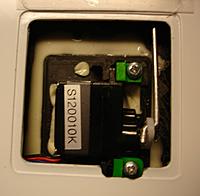For the last 2 months I have been shooting aerial footage using a GoPro HD Hero camera. Awesome camera. As part of the process I have been experimenting with how to best process the video to remove shaking from the video clips as the camera itself does not have an image stabilization function.
I just posted a side-by-side video comparison of two different methods of stabilizing video footage: Method 1 is using the built-in Stabilize Media option (Tools | Video menu) found in the Sony Vegas Studio HD Platinum 10.0 software. This is an earlier version of the proDAD Mercalli video stabilizer that has received good reviews. Method 2 is using the VirtualDub video editing program and the companion Deshaker filter plug-in, both of which are available for free.
I included embedded comments in the video and which method I like better. If and when I decide to shell out $200 for the proDAD Mercalli plug-in I will also post a comparison of that. For now, though, I'm happy with
Stabilization settings I used: (Note: I first convert all GoPro MP4 video files using the HuffYUV lossless codec in VirtualDub and saved as an AVI file before deshaking)
Vegas Movie Studio HD Platinum 10.0:
Type: General footage, Intensive Analysis
Rolling shutter correction: checked
VirtualDub Deshaker filter:
Pass 1: Square pixels, Progressive scan, Camcorder has a rolling shutter: Amount: 82%
Vid output: Motion vectors, Block size: 30 pixels, Scale: Full, Use pixels: All, Color mode: RGB
Detect rotation: checked, Detect zoom: checked
Remember discarded areas to next frame: checked
Pass 2: Same destination properties as source: checked, Resampling: Bicubic,
Edge compensation: Adaptive+ fixed (no borders)
Extra zoom factor: 1
Motion smoothness: all 4 values are 1000
Max correction limits: Horiz, Vert, & Zoom: 15, Rotation: 5
Comments welcome.
Chris B.
 Views: 618
Views: 618  Views: 547
Views: 547  Views: 550
Views: 550  Views: 540
Views: 540  Views: 529
Views: 529  Views: 524
Views: 524  Views: 535
Views: 535  Views: 561
Views: 561 











 .
.

